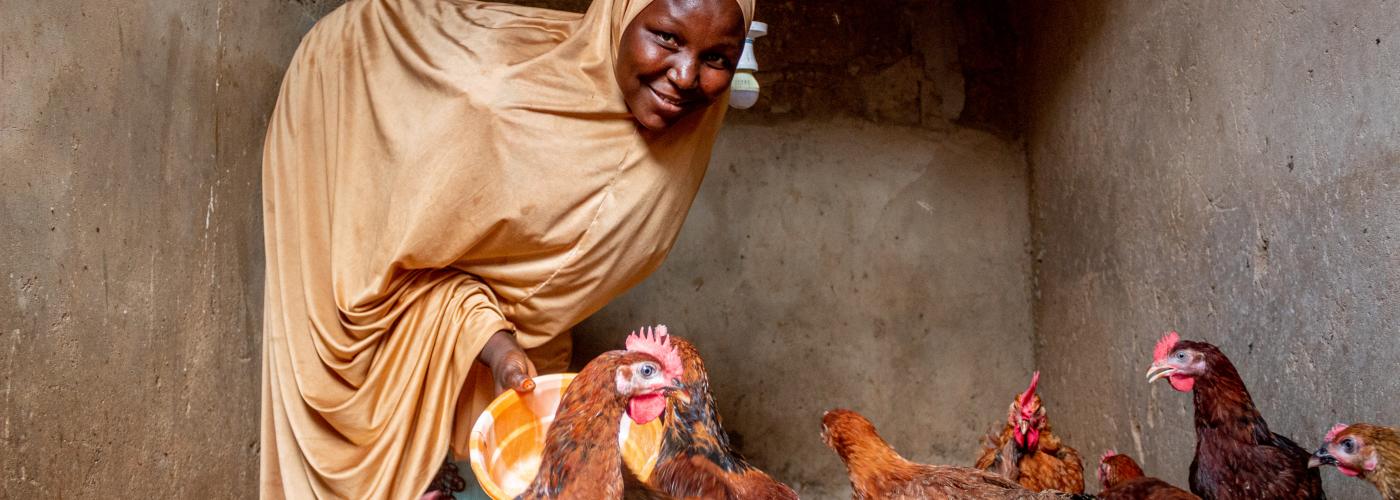The Importance of Resilience Thinking in Market System Development Programs
Image

This post was written by Dan Hudner, Market System Resilience Measurement Lead at Mercy Corps.
Over the last two years, COVID-19 has disrupted lives globally, from illness and personal isolation to price increases and lost income as supply chains are cut. In countries where markets and livelihoods are already threatened by conflict and climate change, it has been yet another blow to fragile economies, which remain largely informal and dominated by microenterprises. Vulnerable groups — women, youth, and displaced persons — have disproportionately lost income.
The disruptions caused by COVID-19 illustrate the need to incorporate resilience thinking into market systems development (MSD) programs, which use facilitation tactics with market actors to stimulate long-run, widespread change. It is timely that USAID has developed a framework to define and measure market systems resilience (MSR). Partner organizations such as ACDI/VOCA, iDE, RTI, and Mercy Corps have piloted versions of this framework in assessments and measurement efforts. The framework calls out the characteristics of systems that affect their ability to respond to shocks, including the ways actors interact with each other, the variation in actor and product types, and the concentration of power held by different groups.
How is Mercy Corps adding MSR to our work?
Our efforts to understand market systems resilience are focused on practically testing USAID’s framework in fragile contexts. We see this as a natural extension of our MSD work, one that should reinforce many of our principles while also helping us identify opportunities to strengthen interventions by using resilience concepts.
Implementing high-quality market systems programming in fragile contexts is difficult on its own terms, so we need to be practical and ask important questions like: How can we select partnerships that address harmful power dynamics in agriculture markets? How can our interventions help businesses adapt when supply chains are cut?
What does an MSR lens look like in practice?
To see an example, we can look to Northeast Nigeria, where the continued insurgency and security responses have displaced over 2.1 million people and disrupted livelihoods and community support networks. The Gates Foundation-funded Poultry Development for Resettlement (PDR) program worked to revitalize the poultry market in the Northeast, focusing activities on building the income of displaced women. The project partnered with a network of privatized businesses called Mother Units that rear productive Noiler chickens. The project began by strengthening the input market to consistently provide these Units with day-old chicks, feeds, vaccines, and medicine.
Up until now, these are standard interventions that might be incorporated into MSD programming in any context or region. However, the PDR team realized that the frequent periods of violent instability, which closed roads and isolated communities, could undercut the poultry sector and other critical markets. They honed in on the need to improve coordination and information sharing among transport providers - a market function deeply impacted by conflict, but one that development programs in more stable contexts do not often prioritize. To this end, the program supported the creation of a multi-stakeholder platform, managed by transport union workers, to share updates on insecurity, route information, market prices, and vehicle availability - enabling SMEs who sell critical poultry inputs to know when to make purchases, even during chaos caused by the conflict.
PDR’s investment in this platform improved the connectivity of the regional poultry market and contributed to additional changes in transportation networks. Since the program’s end, other small enterprises have bought into the platform to maintain their supply lines throughout periods of violence. Meanwhile, displaced women have been able to leverage their earnings from poultry sales into other investments, further diversifying their income streams.
While it is common for MSD programs to partner with market actors to address a business constraint, we are developing our MSR approach not to break the mold, but to proactively consider how shocks limit a system’s functionality, and which interventions can mitigate this.
What more do we need to understand about MSR?
Programs like PDR are a start, but the MSR framework can take us further. Power dynamics, connectivity, and inclusion are all core elements. We need to keep asking questions like: should we help other businesses participate in the transportation platform, so those both large and small are better equipped to manage conflict risks? Are the businesses participating in the platform serving vulnerable households, the true target group?
Mercy Corps will continue to share our learning as we untangle market systems resilience through programming and research in other contexts. We have initiatives focused on agriculture in Northeast Nigeria, animal health in Karamoja, Uganda, microenterprises in crisis-afflicted Lebanon, and economic recovery in Iraq. Our vision for MSR guidance builds on best practices already used by MSD practitioners - understanding the connections between a range of market actors, and how informal rules affect which ones prosper and which fail, but also how these factors contribute to the system’s reaction to shocks. These approaches synergize with USAID’s resilience principles, and we are eager to ground-truth the best ways to engage in fragile markets while we continue to learn from our experiences and those of our peers.

